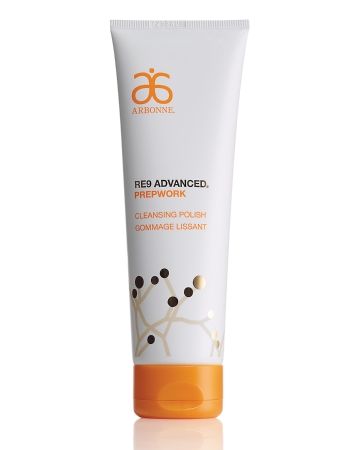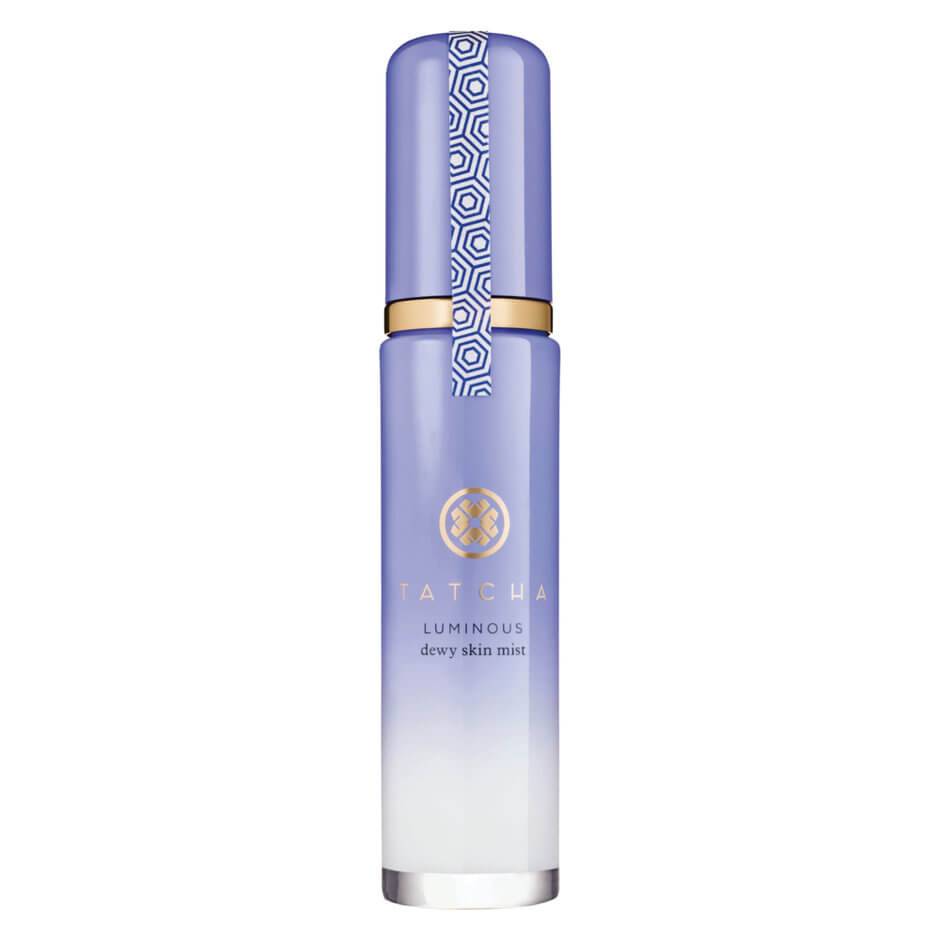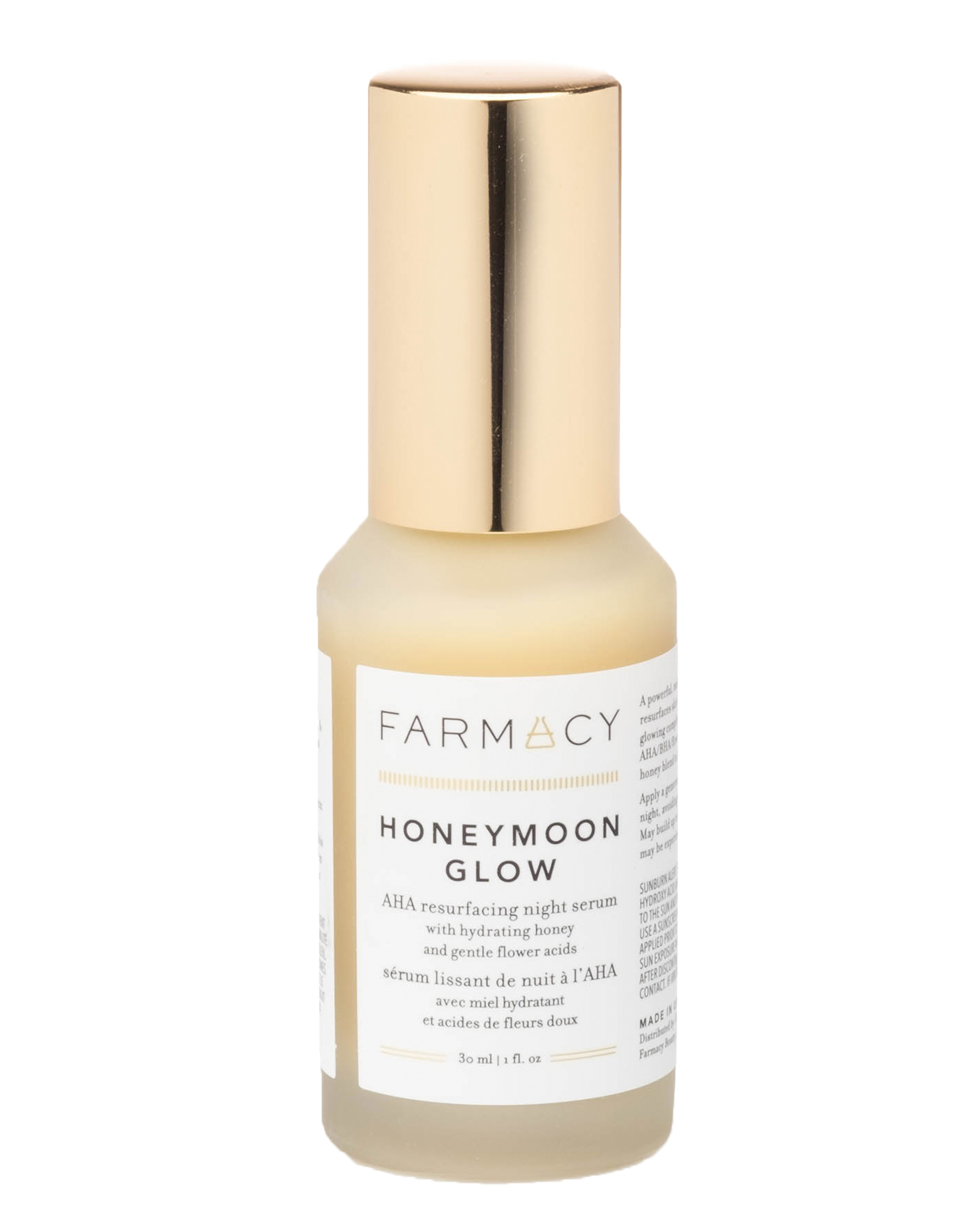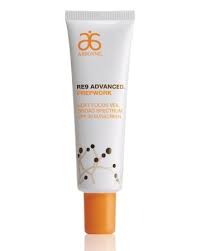Category: Beauty
How switching to clean beauty can improve your overall health
There are over 2,000 ingredients used in beauty and cosmetic products that are horrible for our skin, health and the environment. Here is how to spot clean products and switch to clean beauty.
*This post contains affiliate links. This allows me to make a small commission if you decide to purchase one of the linked products. This is at no extra cost to you. This article reflects my own honest opinions on all products.
Hello babes,
A couple weeks ago, I did a post on basic skin care. I talked a little bit about clean beauty and how it is important to incorporate products that are rendered ‘clean’ into your skin care routine.
So some of you have been asking for a post that talks about clean beauty a little more in depth. So I have written this post in order to help you so that the next time you go pick up some beauty or skin care products, you know what to look for and what to avoid.
Up to 60% of what we put on our skin gets absorbed and in America, the FDA does not regulate skin care products. So harmful ingredients in your skincare can cause health issues.
This post is going to be a longer one, sorry! But I think it is really important that I present you with the facts as best I can.
Skin care is something I have always been passionate about. I spent about two years in college working for European Wax Center as a part time job. In my time there, I learned so much about skin care and how to take care of skin from head to toe. It was an invaluable experience and I still use that knowledge everyday. It also solidified my love for skin care products and now my skin care routine is definitely something I consider to be an essential part of my day.

I will be talking a little bit about the products I use and have used in the past and will hopefully give you enough information so that you can mindfully shop for products that you need 🙂
Know what ingredients to avoid and how to spot them:
Okay, so let’s start off by saying that there are over 2,000 banned ingredients in the EU when it comes to cosmetic and beauty products. However, in the US there are only about 30 ingredients that are banned or regulated. Even then, there are ingredients used regularly in products that are harmful to use on our bodies that are allowed and are most likely floating around in at least one of your cosmetic products.
This makes shopping for clean products incredibly difficult. I feel like when I read the labels on beauty products I need a PhD in molecular chemistry. However, over the years I have become much more efficient at figuring out what products to use, and which brands are clean.
There are 12 main ingredients that you should be wary of when shopping for new products. We call these The Dirty Dozen. If you remember these 12 things, you can get by pretty easily without needing a degree in advanced chemistry…well, you may need to know how to look for them, but don’t worry, I have you covered.
Luckily, if you live in the EU, a lot of these ingredients are banned already 🙂
The Dirty Dozen
The health risks mentioned in this section are all correlational, not causal. However, there seems to be evidence that the health risks listed below have a strong connection to these ingredients.

1. Parabens
Parabens are a group of synthetic preservatives found in a lot of cosmetic and beauty products. It is often used to prevent microbe or bacterial growth on or in your cosmetic products. Parebens were banned from products sold in the EU in 2012, so if you live in the EU, you’re less likely to run into this fun one.
Parabens are known to cause hormonal dysfunction among other health related issues:
- Increased risk of breast cancer
- Reproductive toxicity
Look at the label for:
If a product contains parabens, the ingredient will have the word ‘paraben’ as a suffix. Some common parabens often used are:
Methylparaben, Ethylparaben, Propylparaben, Butylparaben, Isobutylparaben
2. BHA and BHTs
Butylated hydroxyanisole (BHA) and butylated hydroxytoluene (BHT) are antioxidant compounds used as preservatives a wide range of cosmetic products.
According to safecosmetics.org there are a lot of health issues related to the use of BHA’s and BHT’s:
- Endocrine dysfunction
- Organ system toxicity
- Developmental and reproductive toxicity
- Cancer
- Irritation
Look at the label for:
The labels will say BHA or BHT or the following:
Butylated hydroxyanisole (BHA), butylated hydroxytoluene (BHT), antioxyne, antrancine, eec no. e320, embanox; nipantiox, protex, sustane, tenox bha,
3. Coal Tar Dyes
Synthetic dyes are best avoided. These are mostly found in hair dye products, however, they can be found in other cosmetic products. These are also banned in the EU. In America, it is required for hair dye containing these chemicals to be labeled.
coal tar dyes have been associated with skin and lung cancer among other health issues:
- Organ system toxicity
Look at the label for:
Coal tar solution, tar, coal, carbo-cort, coal tar solution, coal tar solution USP, crude coal tar, estar, impervotar, KC 261, lavatar, picis carbonis, naphtha, high solvent naphtha, naphtha distillate, benzin B70, petroleum benzin
4. DEA
DEA, also known as Diethanolamine is a chemical group of amino acid and alcohol that are often used in hair and makeup products.
DEAs have been associated with:
- cancer
- organ toxicity
- plus their production is very toxic to the environment.
Look at the label for:
Triethanolamine, diethanolamine, DEA, TEA, cocamide DEA, cocamide MEA, DEA-cetyl phosphate, DEA oleth-3 phosphate, lauramide DEA, linoleamide MEA, myristamide DEA, oleamide DEA, stearamide MEA, TEA-lauryl sulfate
5. DBP
DBP (dibutyl phthalate) are compounds often found in nail polish and fragrances. You should be aware that a legal loophole allows for DBPs to be left out of labels if added in a fragrance.
DBPs have been associated with a number of health issues such as:
- Endocrine disruption
- Reproductive toxicity
- Cancer
Look at the label for:
phthalate, DEP, DBP, DEHP and fragrance
6. Formaldehyde
So this might sound familiar, as the chemical used in the embalming of dead bodies. Yeah, not something you want on your living skin….The really scary thing? Formaldehyde and Formaldehyde releasing chemicals are often used in baby care products as well as personal care products.
There are other chemicals that aren’t necessary formaldehyde, but they do release it, as it is a gas.
Formaldehyde and formaldehyde releasing chemicals are often associated with:
- cancer
- skin irritation
Look at the label for:
Formaldehyde, quaternium-15, DMDM hydantoin, imidazolidinyl urea, diazolidinyl urea, polyoxymethylene urea, sodium hydroxymethylglycinate, 2-bromo-2-nitropropane-1,3-diol (bromopol) and glyoxal.

7. Parfum/Fragrance
So not all fragrances are bad necessarily, but, as you may have seen above, there are legal loopholes that allow companies to admit harmful chemicals from the ingredients list if it is part of a fragrance. So, you don’t know which combination of harsh chemicals may be lurking in the “fragrance”.
Because the specific components of fragrance can be omitted from a label, there can be a variety of ingredients that cause many health issues.
Look for on the label:
Fragrance, perfume, parfum, essential oil blend, aroma.
*However, if a brand is certified ‘clean’ and they use fragrance, they are not using any chemicals deemed dangerous in their fragrance. Just be diligent when shopping folks 🙂
8. Peg Compounds
Peg Compounds are often used to make products less ‘harsh’. There is nothing inherently bad about PEG compounds, however, in their manufacturing process, they are often contaminated with ethylene oxide. This is a carcinogen and can cause a variety of health issues such as:
- Cancer
- Skin irritation
Look on the label for:
PEG-7, PEG-6, PEG-40
9. Petrolatum
Petrolatum is another one of those weird ones where contamination of the ingredient is the main concern. Upon refinement, it can be contaminated with polycyclic aromatic hydrocarbons which have the following health concerns:
- Cancer
Look at the label for:
Petrolatum, Petroleum Jelly, Paraffin Oil, Mineral Oil and White Petrolatum (refined and safe for use).
*Plus, mineral oil, petrolatum jelly etc can really clog up your pores, so better to just avoid this guy 🙂
10. Siloxanes
Siloxanes have been listed as possibly the most harmful of all the dirty dozen ingredients. Siloxanes are found in a wide range of makeup products. You probably are more familiar with them as silicones.
The health risks associated with silicones are:
- endocrine disruptors
- reproductive toxicants
- uterine tumours
- neurotransmitter issues within the nervous system.
Look at the label for:
cyclotetrasiloxane, cylcopentasiloxane, cyclohexasiloxane. These are other names they can be found under: cyclotetrasiloxane, octamethyl; cyclotetrasiloxane, octamethyl-; decamethylcyclotetrasiloxane; hexanethylcyclotrisiloxane; octamethyl cyclotetrasiloxane; octamethyl- cyclotetrasiloxane; octamethylcyclotetrasiloxane; cyclopentasiloxane, decamethyl-; decamethyl- cyclopentasiloxane; decamethylcyclopentasiloxane
11. SLS
Sodium Laureth Sulfate is again, one of the chemicals where the biggest concern is contamination with chemicals such as ethylene oxide.
Health concerns are:
- Cancer
- Skin irritation
Look at the label for:
alpha-sulfo-omega- (dodecyloxy) poly (oxy-1,2-ethanediyl) , sodium salt; dodecyl sodium sulfate; peg- (1-4) lauryl ether sulfate, sodium salt; poly (oxy-1,2-ethanediyl) , .alpha.-sulfo-.omega.- (dodecyloxy) -, sodium salt; poly (oxy-1,2-ethanediyl) ,a -sulfo-w (dodecyloxy) -, sodium salt; poly (oxy1,2ethanediyl) , (dodecyloxy), sodium salt; polyethylene glycol (1-4) lauryl ether sulfate, sodium salt; polyoxyethylene (1-4) lauryl ether sulfate , sodium salt; sodium peg lauryl ether sulfate; sodium polyoxyethylene lauryl ether sulfate; sodium polyoxyethylene lauryl sulfate
12. Triclosan
Finally, the last on our list is Triclosan, which is an antimicrobial ingredient used in a wide range of personal care products.
The health concerns related to triclosan are:
- Endocrine disruption
- Creation of resistant bacteria
- Environmental concerns
Look for on the label:
Triclosan (TSC) and triclocarban (TCC)
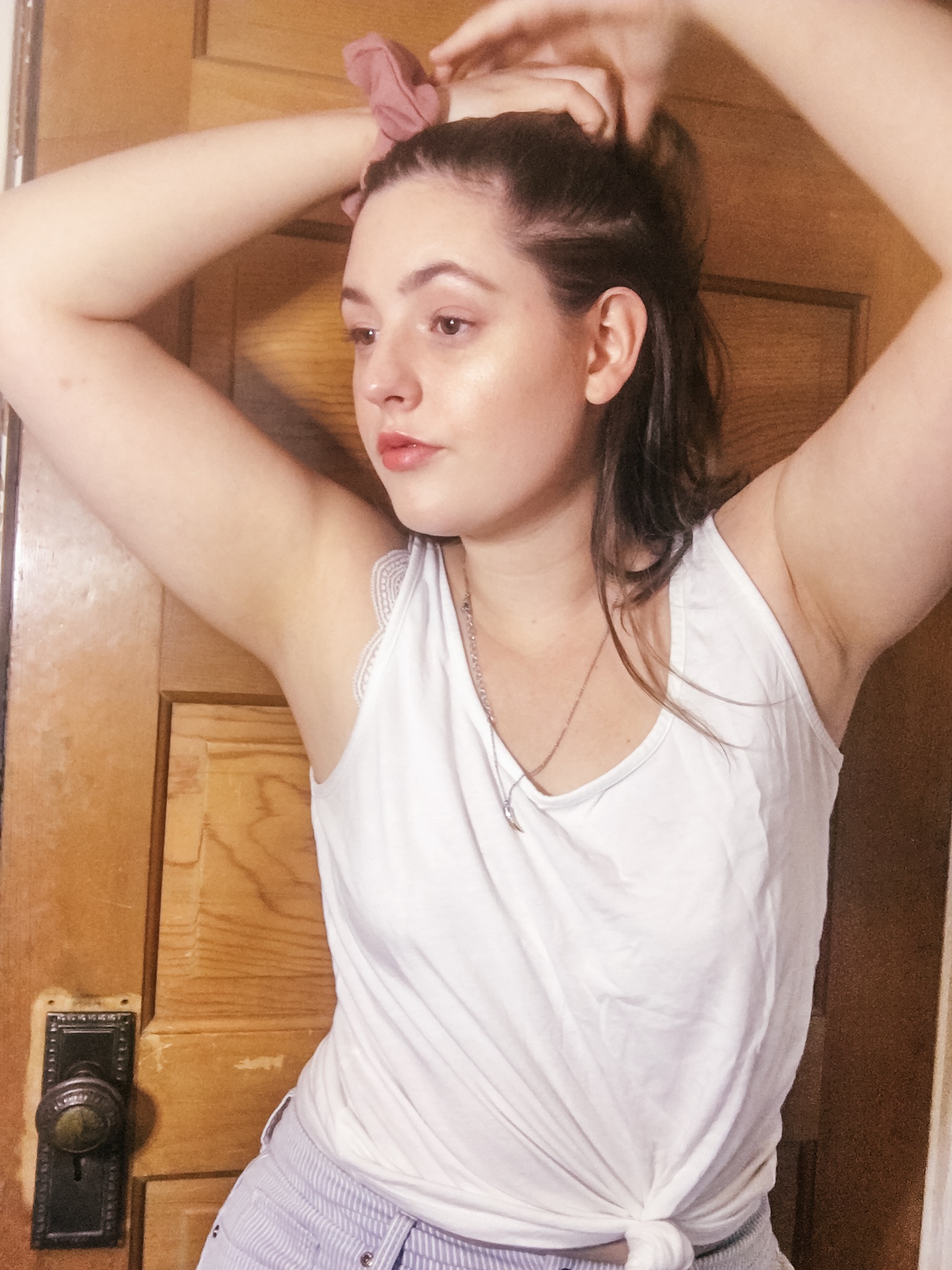
Ethical, and clean, and green, oh my!
Not only is shopping clean cosmetics good for you, but it is often better for the environment! Although, there are little things to watch out for if you want to be more ethically and environmentally conscious in your beauty routine.

- Avoid Microbeads- Microbeads are not green and they are horrible for your skin, so avoid them all together! They are made from material that does not easily disintegrate and often pollute the oceans and are consumed by ocean life. Plus, they cause micro tears on your skin which can cause infections and acne. Microbeads tend to strip the moisture from your skin if you over exfoliate.
- When using disposable products, opt for eco friendly or compostable ones- you can buy makeup wipes and face masks that are eco-friendly and compostable!
- Look for companies that use recycled packaging- One other way to reduce the impact on the environment is to look for products that use recycled packaging. Plus, most packaging is recyclable, so once the product is done, either keep the container and up cycle or recycle 🙂
Brands that are certified Clean & Green and Ethical
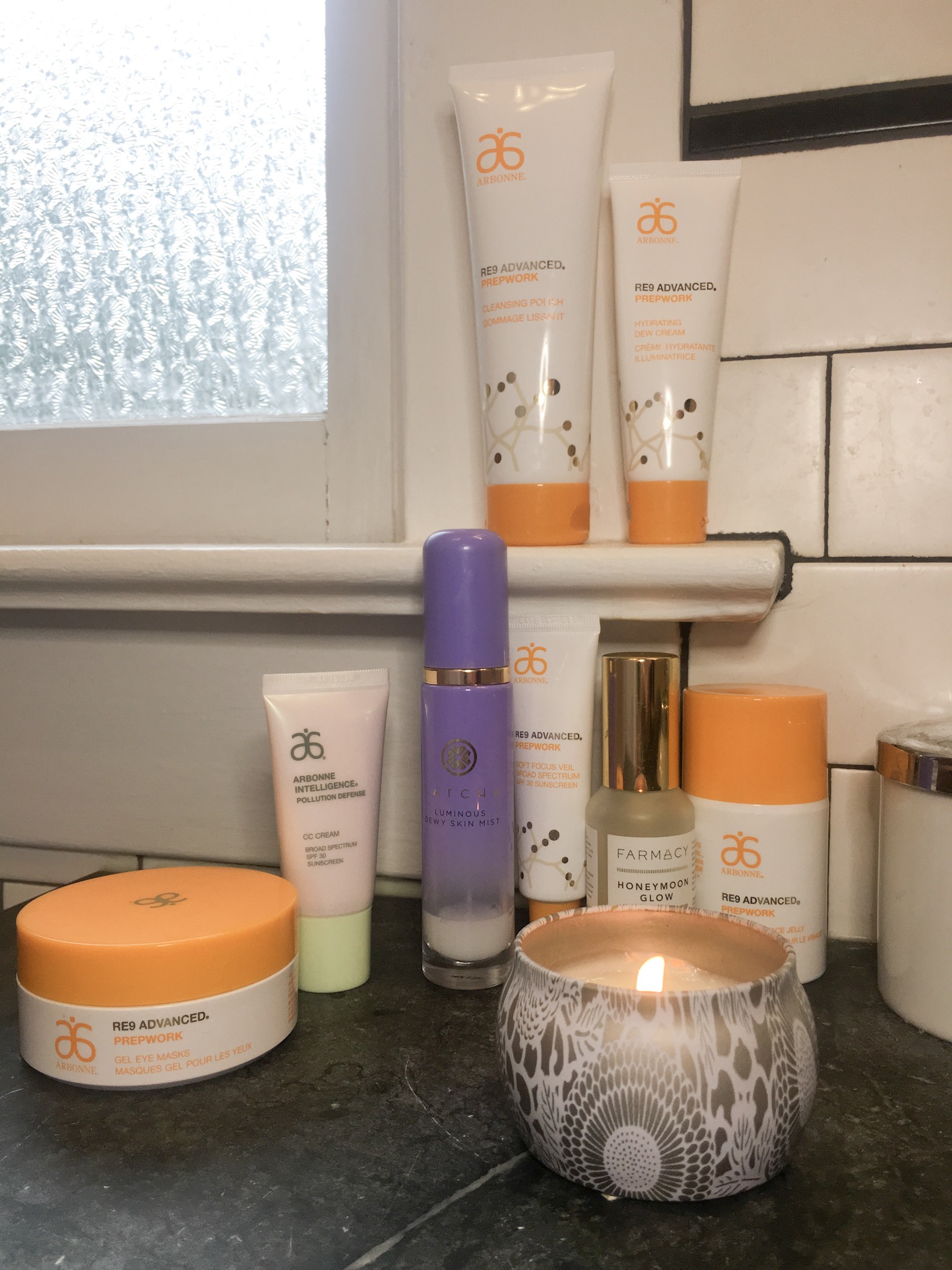
- Arbonne* Vegan friendly
- Lush *Some products are vegan friendly, some are not. They did just stop using eggs in their products
- Tatcha *Some products are vegan but they use beeswax in others
- Farmacy *Not vegan (uses honey)
- Herbivore *Vegan friendly
To make your life easier, look for this label at Sephora:

Shop My Skin Care and Beauty Products:
These are the products I use daily! All these products are certified green, clean and ethical products 🙂

